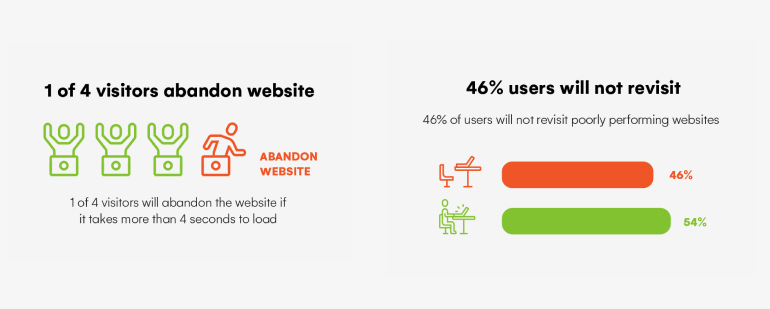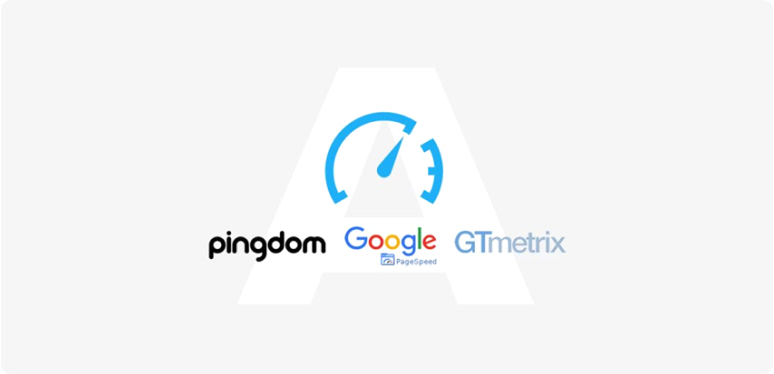Performance optimization of WordPress Websites

Performance matters! Your website is often the first touch point with your current and future customers, and websites that are optimized will generally have higher conversion rates, higher level of customer trust and in some cases lower hosting bills.
People hate to wait for the site to load and in general give up within three seconds.
Here’s some statistics to illustrate how performance can greatly impact business results.


The Highs:
- Netflix saw a 43% decrease in their bandwidth bill after turning on GZip.
- Etam reduced it’s average page load time from 1.2s to 500ms and increased conversions by 20%, time on site by 21%, and pages viewed per visit by 28%.
- When YouTube introduced a version of their pages that was 90% lighter, they saw a large increase in traffic in areas with poor connectivity such as Southeast Asia, South America, Africa, and Siberia.
- Edmunds decreased load time by 77% and saw a 20% increase in page views, a 4% reduction in bounce rate, and a 3% reduction in ad impression variance.
- Walmart saw up to a 2% increase in conversions for every 1 second of improvement in load time. Every 100ms improvement also resulted in up to a 1% increase in revenue, and many more examples.
And the lows:
- BBC loses an additional 10% of users for every additional second it takes for their site to load
- DoubleClick by Google found 53% of mobile site visits were abandoned if a page took longer than 3 seconds to load.
How to measure website performance
Real-world performance is highly variable due to the differences in users devices, network connections, and other factors. For example, the same site will not load on mobile, wired and wireless devices.
Nowadays, there are many tools to help you analyze your website. The ones that we use are GTMetrix, Pingdom as well as various Google developer tools such as PageSpeed Insights and Lightspeed.

How do I keep my WordPress website secure?
Nowadays, site security is standard practice and should be a part of your overall website maintenanc…
Our performance optimization process
Before starting with site optimization, we prefer to duplicate it to our development environment. Performance analysis can be done on the live site, however the optimization itself is done in development. This is important for a number of reasons including; we can have accurate before and after comparison on the same server, safety in case any problems occur during the process with the ability to update, test and disable plugins (more details below), and the ability to see what more can be done server side.
After the development environment is set up, we analyze the site using the online scanners. Based on the results, we propose the best approach in doing the optimization.
Not every possible optimization update makes sense from an ROI perspective. Our objective is to identify the ‘low hanging fruit’ and propose the set of improvements we can do that will yield the best cost-benefit ratio.
Here are the general steps that we usually suggest or implement.
Server-side optimization:
- Hosting (This is something we can notice straight away, if the site performs better on our test server in comparison to live server)
- Using cloudflare if possible
- Implementing CDN (content delivery network) if possible, unless it is already in use
- Upgrading to the latest and fastest possible PHP version. This step requires prior checking if the site will work on it.
- Turning on caching and gzip compression
WordPress improvements:
- Deactivating/deleting plugins that are not in use
- Replacing plugins with custom code. Often bloated plugins are used for a simple feature that can be replaced with several lines of code
- Removing duplicated plugins. In some cases to protect forms from receiving spam emails, multiple anti spam plugins are activated. This can cause conflicts between them and they might not work at all. We often notice similar issues with caching and slider plugins
- Optimizing images, resizing them to the proper dimensions, and replacing jpg with webp format
- Implementing lazy load for images
- Minifying JavaScript and CSS
- Deleting Garbage Files and optimizing database including the removal of any draft comments, auto draft posts, revisions
- Updating WP and plugins
- Placing expires headers in htaccess.
- Adding ‘async/defer’ to scripts
- Removing extra fonts. For example, using a browser simulated italic font instead of italic font family. It is best practice to have a maximum of 2 fonts used on the site
- Removing 301 redirects. This is only if those redirections were placed a long time ago as there is a big chance that they are no longer indexed on google and users cannot find them anyway.
- Removing unused css. This usually applies to multi-purpose themes and page builders. In general they include a lot of variations for one block, and all the variations are not used. There is no reason to have that css in your theme. But this is only if you are sure that those variations will not be used.
You can read more about our Performance Optimization service here: WordPress Performance Optimization
The results and what comes after the site is optimized
After we complete the performance optimization, your website will work faster, be more efficient, with lower bounce rates and higher engagement levels from users. Our clients receive a detailed report on what was implemented and accomplished, including the test results compared to original benchmark levels we have measured at the beginning of the project.
However, performance optimization is often not a one time thing as website performance can repeatedly deteriorate over time. This is primarily due to the fact that websites are continually updated with content and images, plugins and WordPress with new versions, servers with new features.As a website admin, these are the steps you can do to keep the website running smoothly:
- Content and image optimization: Images uploaded directly through digital cameras can often be much larger than required for the website. Image resolution of a 4K camera nowadays is 3840 x 2160px, while your website may not display images larger than 1600px in width (this may vary). Consider optimizing images before uploading them. Reduce the size and run the image through an image optimization tool such as compressor.io
- Regular updates: WordPress is an open source platform that is continually getting updated by core contributors in order to perform better and more securely. Continually updating WordPress and plugins is both improving your site security ( you can read more about in our article: Importance of keeping your WordPress website updated), as well as performance.
- Upgrade your servers: If your website is hosted on a low budget shared hosting, its performance might be limited due to performance limitations of the server. To achieve better results, consider upgrading to a VPS hosting plan or higher.
- Rebuild the website: A lot of WordPress sites are built with a multi-purpose theme that provides an easy drag&drop site builder experience. The most common issue with those themes is poor performance, as they are built for 100s if not 1000s different variations and bloated with CSS and JS code that in 90% of cases you are not using. We build custom themes to ensure high quality code, optimized for performance. Consider redesigning or rebuilding your website to ensure it will run as smooth as possible.
Reduce the 3rd party scripts: Marketing teams love tracking! To properly track conversions and site usage they will implement a number of 3rd party tracking scripts and tracking pixels on the website. We’ve seen cases where more than 20 different scripts are loaded on every page load, especially if GTM (Google Tag Manager) is used but not properly maintained. Review the 3rd party scripts and consider reducing them to bare minimum to avoid deteriorated performance.


